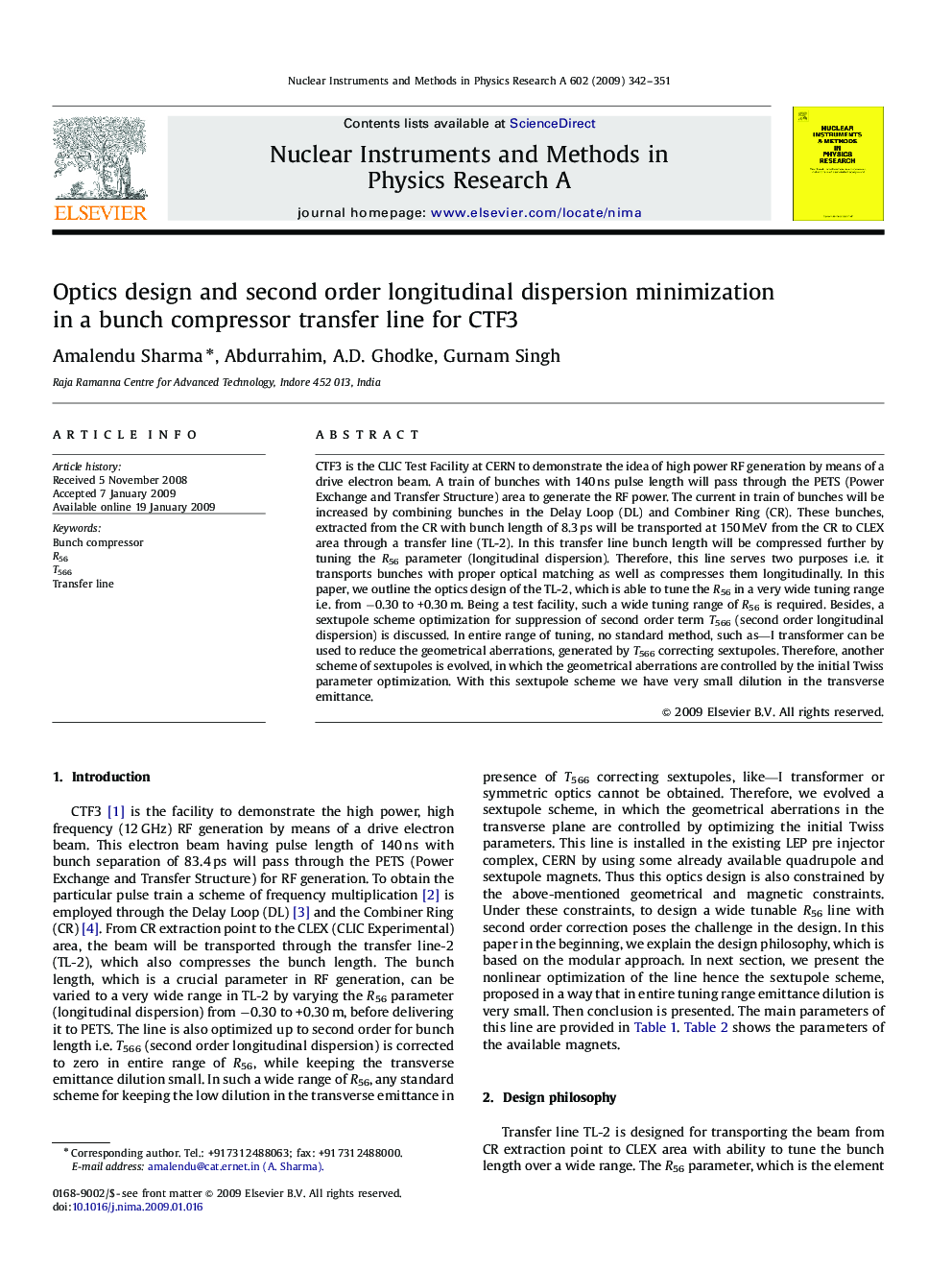| Article ID | Journal | Published Year | Pages | File Type |
|---|---|---|---|---|
| 1828373 | Nuclear Instruments and Methods in Physics Research Section A: Accelerators, Spectrometers, Detectors and Associated Equipment | 2009 | 10 Pages |
Abstract
CTF3 is the CLIC Test Facility at CERN to demonstrate the idea of high power RF generation by means of a drive electron beam. A train of bunches with 140Â ns pulse length will pass through the PETS (Power Exchange and Transfer Structure) area to generate the RF power. The current in train of bunches will be increased by combining bunches in the Delay Loop (DL) and Combiner Ring (CR). These bunches, extracted from the CR with bunch length of 8.3Â ps will be transported at 150Â MeV from the CR to CLEX area through a transfer line (TL-2). In this transfer line bunch length will be compressed further by tuning the R56 parameter (longitudinal dispersion). Therefore, this line serves two purposes i.e. it transports bunches with proper optical matching as well as compresses them longitudinally. In this paper, we outline the optics design of the TL-2, which is able to tune the R56 in a very wide tuning range i.e. from â0.30 to +0.30Â m. Being a test facility, such a wide tuning range of R56 is required. Besides, a sextupole scheme optimization for suppression of second order term T566 (second order longitudinal dispersion) is discussed. In entire range of tuning, no standard method, such as-I transformer can be used to reduce the geometrical aberrations, generated by T566 correcting sextupoles. Therefore, another scheme of sextupoles is evolved, in which the geometrical aberrations are controlled by the initial Twiss parameter optimization. With this sextupole scheme we have very small dilution in the transverse emittance.
Keywords
Related Topics
Physical Sciences and Engineering
Physics and Astronomy
Instrumentation
Authors
Amalendu Sharma, Abdurrahim Abdurrahim, A.D. Ghodke, Gurnam Singh,
